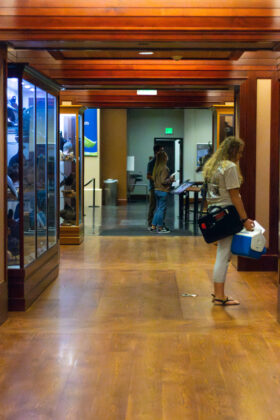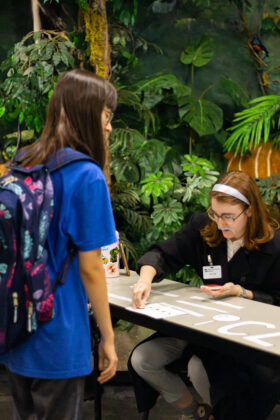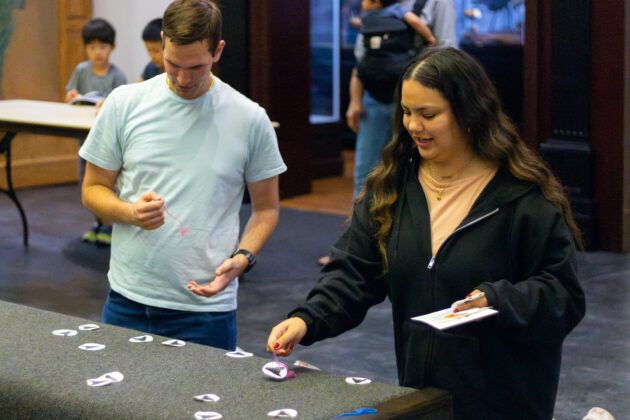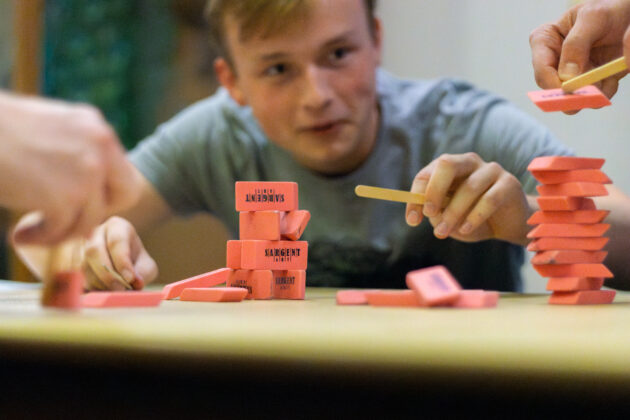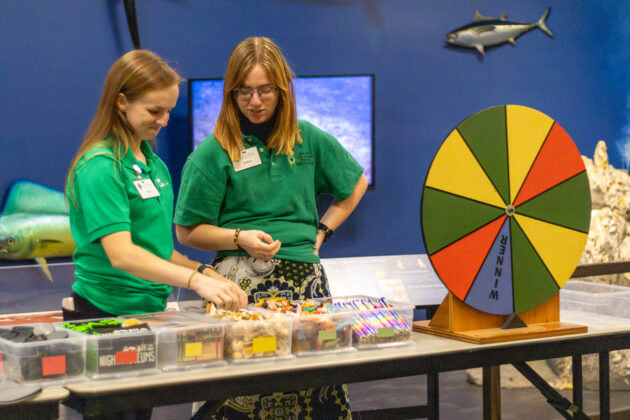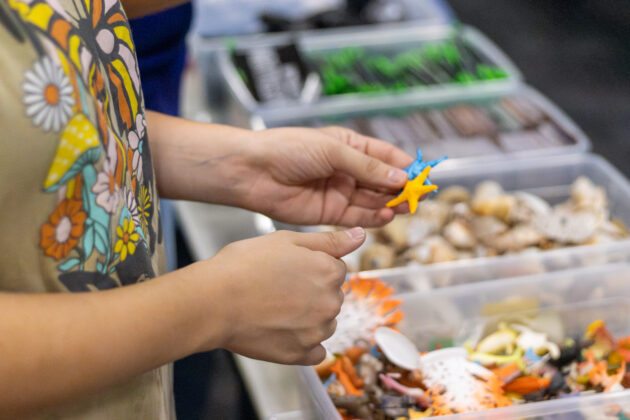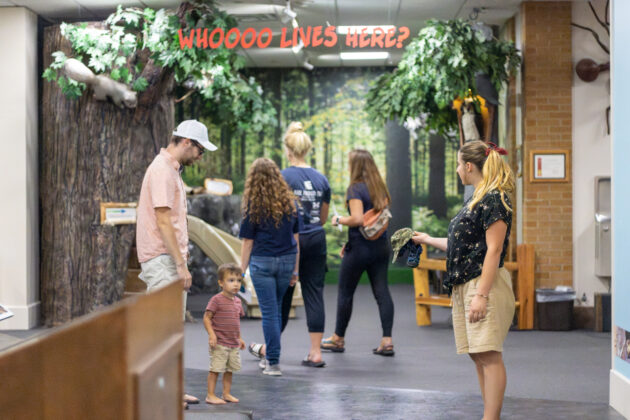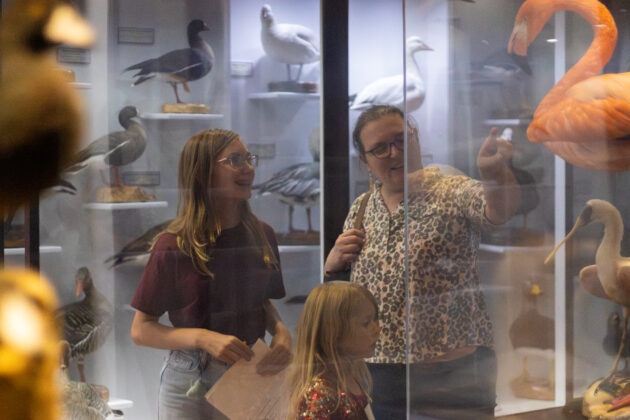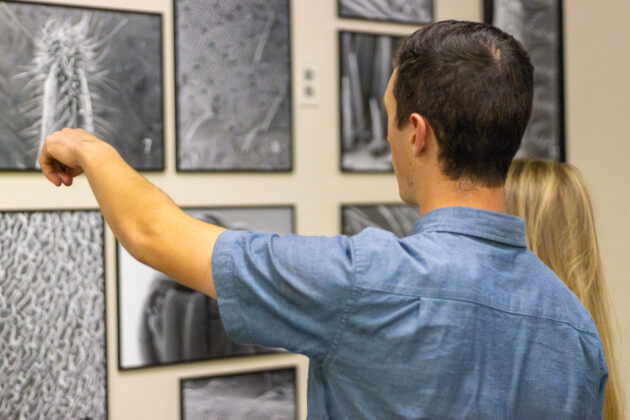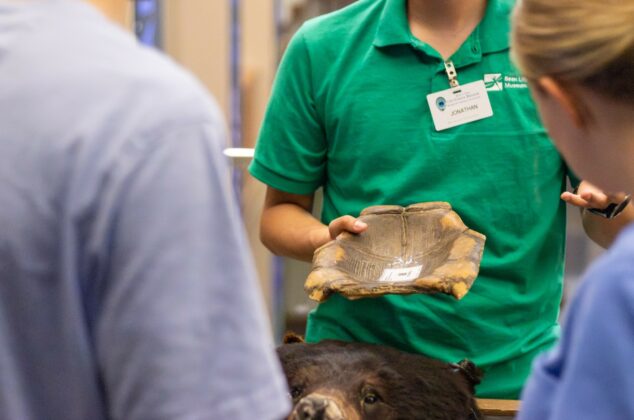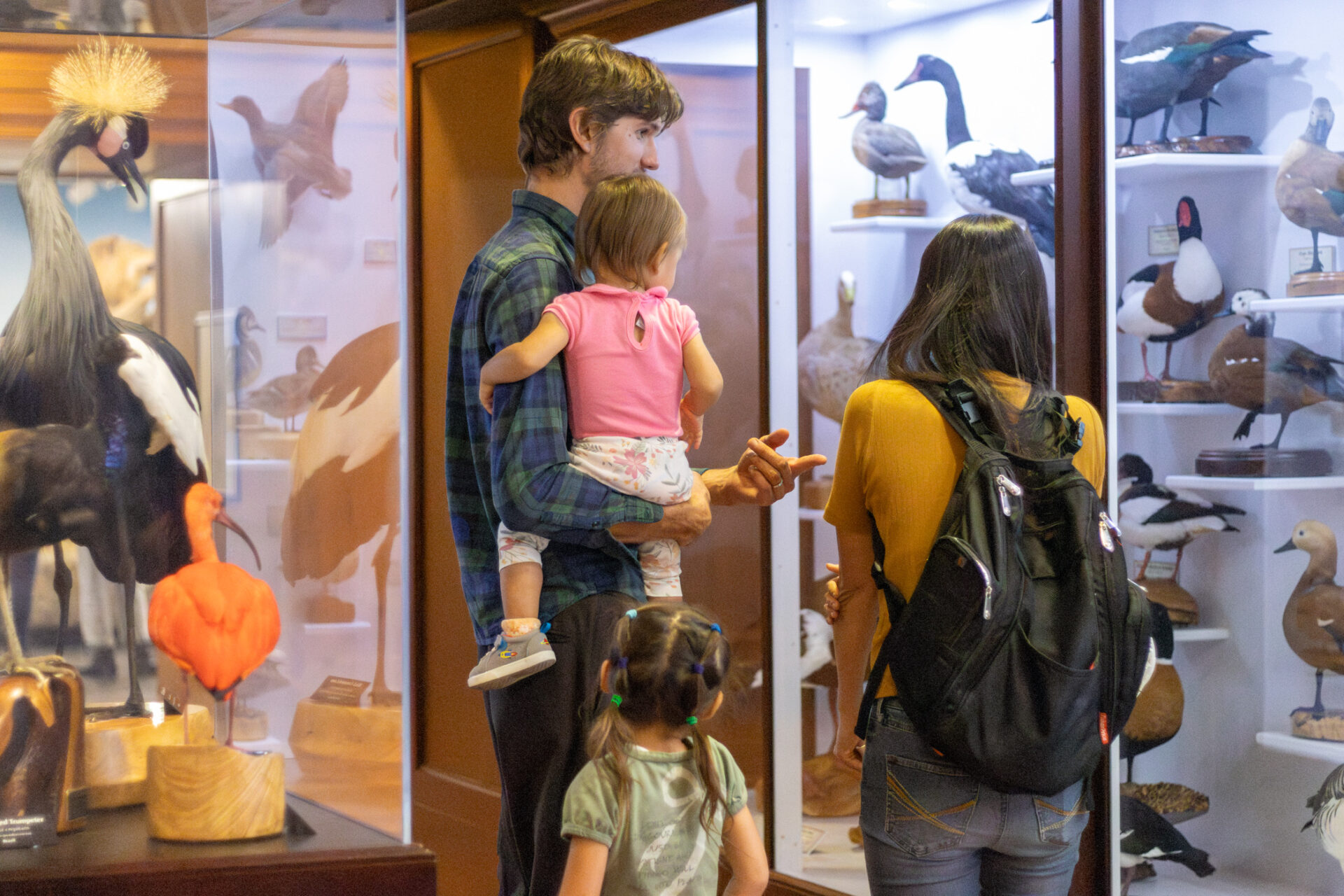
Beyond its impressive collection of animals and insects, the Bean Life Science Museum aims to be a sanctuary that fosters learning among its visitors.
Despite its prominent location on BYU campus, the Bean Museum remains a hidden gem among BYU students. According to Katy Knight, education administrator at the Bean Museum, children and families tend to be the museum’s largest audiences, while many BYU students go their whole college careers without even knowing about the museum’s presence.
In recent years, Knight said the Bean Museum administration has been working on appealing to the BYU student body and finding ways to get students through the museum doors. This push to get BYU students interested in the Bean Museum was initiated by Michael Whiting, who became director of the Bean Museum in 2021.
“He’s the one that’s kind of encouraged us to focus more on college students,” Knight said.
Although Director Michael Whiting’s appointment became official in August of 2021, his history with the museum dates back much longer. Since he joined BYU as a faculty member 26 years ago, Whiting has been an assistant curator at the museum.
Whiting has worked closely with the museum’s insect collection as the insect and arachnid curator. According to Whiting, the Bean Museum has one of the largest insect collections in the western hemisphere with about 3 million specimens.
“We’ve got the largest insect collection for DNA research in the world, and BYU has been at the forefront of studying insect evolution for decades,” Whiting said.
Although the museum administration’s focus has shifted to plan events and activities with college students in mind, Knight said the museum’s mission of inspiring “wonder, understanding and reverence for our evolving planet” always dictates their decisions.
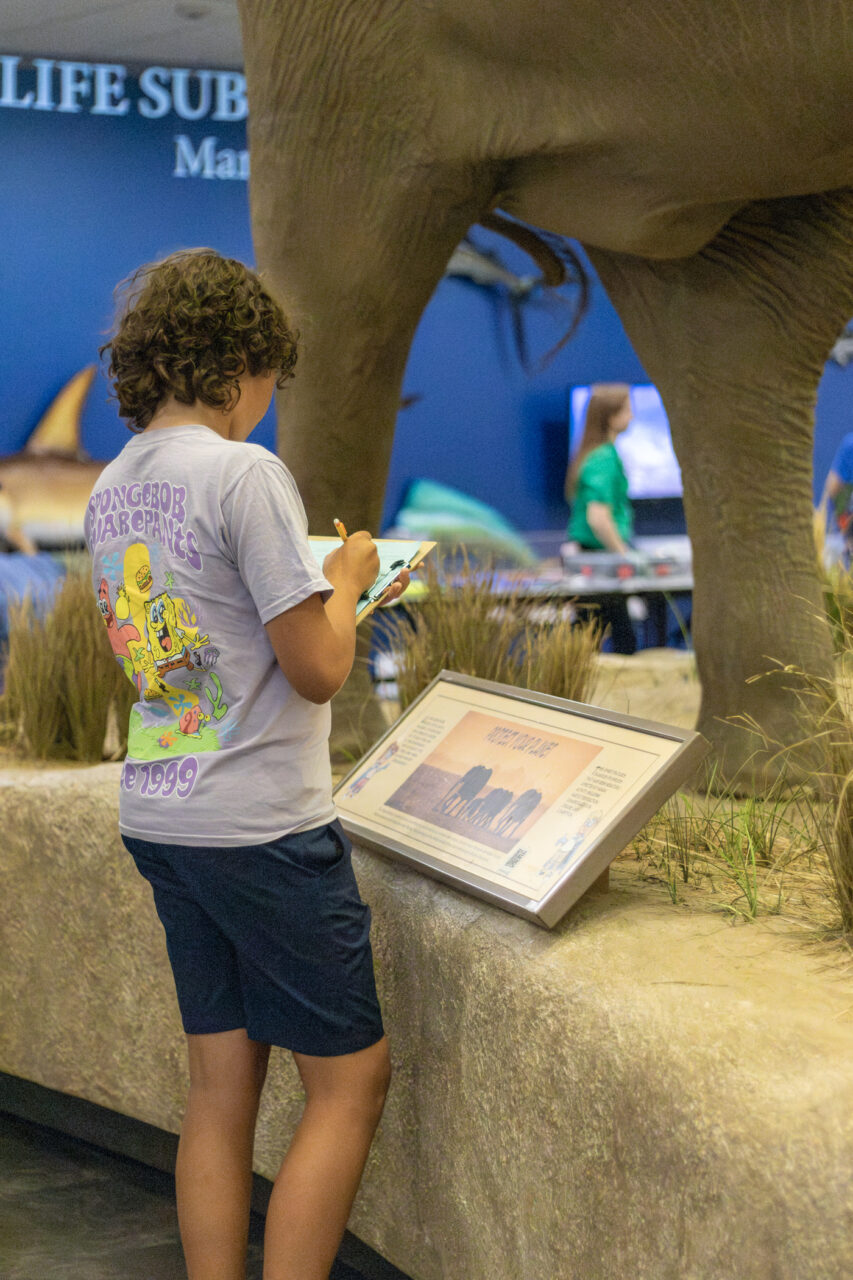
“We’re not trying to be entertaining. We’re trying to teach and make it fun to learn,” Knight said.
Whiting also emphasized the importance of the museum’s mission statement and said they try to curate a memorable experience for visitors from the moment they enter the museum.
“We have things to look at — objects they can see and say, ‘Wow, doesn’t that look cool? A wall with a butterfly made of butterflies,’” Knight said.
The hope of the museum, according to Whiting, is that education and wonder will combine together to help people have a greater reverence for the planet.
In addition to its exhibits, the museum also offers activities and programs to expand its reach beyond the college community.
The Bean Museum hosted a back-to-school event in September to celebrate the museum’s new Utah exhibit. The exhibit consists of a large wall mural that showcases Utah biomes and wildlife diversity as well as a variety of taxidermic Utah animals. The museum has partnered with some local schools to encourage students in Utah Studies classes to visit the exhibit.
Josh Anderson, a resident of Springville, came to the event with his two boys for the Utah exhibit. Anderson’s son was offered extra credit by his Utah Studies teacher for attending the event.

Although Anderson and his family attended the back-to-school event for a school assignment, the Andersons have been visiting the museum for years.
“It’s a resource we have and we enjoy using it,” Anderson said.
As community members and BYU students alike visit the museum’s new Utah exhibit, Bean Museum student employee Kara Branchflower believes visitors will develop a greater understanding of the state’s diversity.
“A lot of times people are just here in Provo and don’t see a lot of the different biomes that we have here,” Branchflower said.
According to Emma Rowland, a BYU senior from Georgia who attended the back-to-school event, the Utah exhibit’s mural and map illustrated just how diverse and expansive Utah is from east to west.
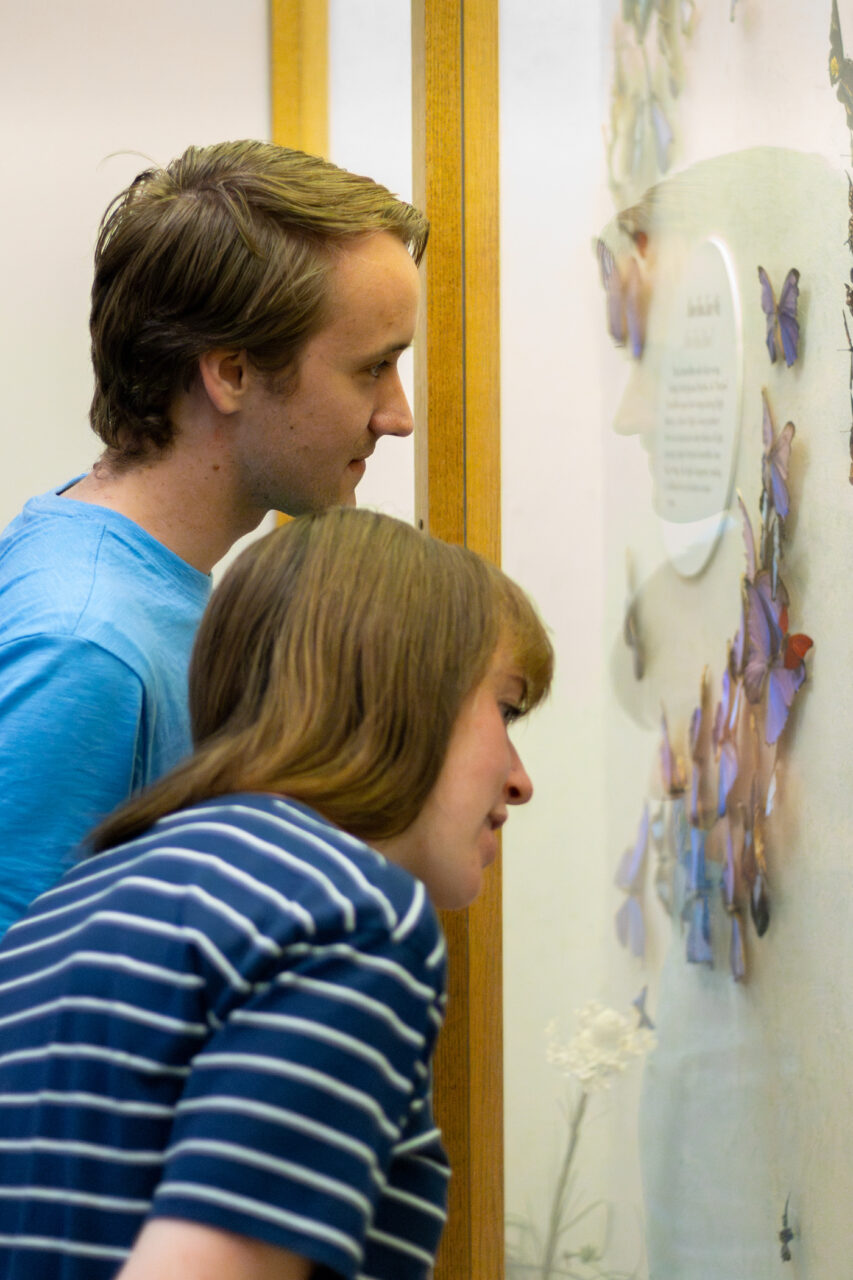
BYU student Samuel Best, a freshman from Washington, said he usually thinks of Utah as a desert. After visiting the exhibit, Best said he has a desire to explore Utah now that he knows “there’s more to Utah than meets the eye.”
Even Utah natives such as Ben Brockbank, a BYU student from Lehi, are shocked by how much they have to learn about all of Utah’s animals. Brockbank said the Utah exhibit helped him understand what is already around him, but he does not always notice because he spends so much time on BYU campus.
The museum administration used the back-to-school event to advertise some of their upcoming events such as a Halloween Family Night on Oct. 30 and a CLUE Murder Mystery Dinner on Nov. 11.
Those interested in visiting the museum can find more about their upcoming events and regular activities like game nights, trivia nights and the Tanner lecture series on the Bean Museum’s website.

